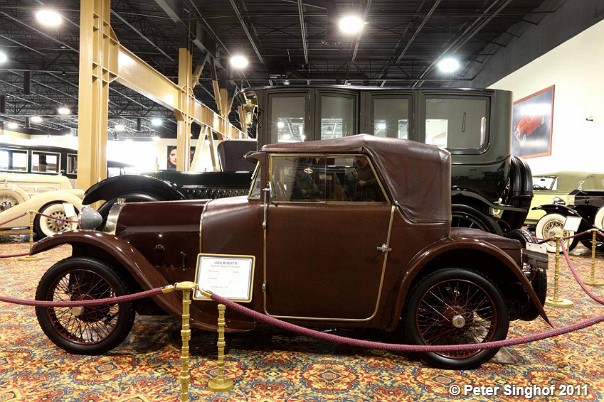1926 Bugatti Type 35

The descriptions of the Classic Cars in the Directory were partly generated or supplemented with the help of artificial intelligence (AI). The content may occasionally not always be entirely accurate or factually correct despite careful checking.
The Bugatti Type 35 1926 is a true masterpiece of engineering, earning its place in history as one of the most famous and successful racing cars of all time. This stunning machine was designed by Ettore Bugatti himself and first introduced in 1924, quickly becoming a dominating force on the track for over a decade.
At the heart of the Bugatti Type 35 1926 is a powerful inline-8 engine, brilliantly engineered to deliver impressive speed and performance. This 2-liter unit boasted an impressive 90 horsepower at 5500 RPM, thanks in part to its advanced camshaft design and four valves per cylinder. With its lightweight construction and impressive power-to-weight ratio, the Type 35 was capable of reaching a top speed of 121 mph – an incredible feat for its time.
The exceptional engineering of the Bugatti Type 35 1926 did not stop at the engine, however. Its aerodynamic body was carefully crafted to minimize drag and maximize downforce, with elegant curves and smooth lines that still capture the imagination today. This body was mounted on a lightweight chassis, further enhancing the agility and maneuverability of the car on the track.
Perhaps most impressive of all was the attention to detail that went into every aspect of the Bugatti Type 35 1926, from the precise instrumentation to the advanced suspension system. The car's front suspension featured one of the earliest examples of a wishbone axle, while the rear boasted a transverse leaf spring setup that was revolutionary at the time.
In short, the Bugatti Type 35 1926 was a triumph of engineering and design, a racing car that pushed the boundaries of what was possible and set records that would stand for decades to come. Its sleek style, exceptional performance, and the technical details that made it all possible continue to inspire automotive enthusiasts around the world, cementing its legacy as one of the most iconic racing cars ever built.
Milestones
- Introduction of the Bugatti Type 35 in 1924 as a successor to the Type 29/30 models - Type 35 officially debuted at the Grand Prix of Lyon in August 1924, driven by Louis Chiron - Type 35 began production in 1926, with approximately 70-75 units produced in the first year - It quickly gained popularity and success in motorsports, winning numerous races and championships throughout the late 1920s and early 1930s - Type 35 featured a 2.0-liter inline-8 engine, capable of producing up to 90 horsepower at 5,000 rpm, and a top speed of over 120 mph - The design of the Type 35, with its narrow chassis and lightweight construction, became a benchmark for racing cars in the era and influenced many other car manufacturers - Bugatti continued to refine and improve upon the Type 35 throughout its production years, with various updates and modifications to the engine, chassis, and other components - Despite being replaced by newer Bugatti models in the mid-1930s, the Type 35 remained a popular and competitive car in motorsports for many years, and is still highly regarded by collectors and enthusiasts today.Technical
- 2.0L twin-cam inline-eight engine - 90 horsepower - 4-speed manual transmission - Top speed of approximately 120 mph (190 km/h) - Lightweight construction with a total weight of 750 kg (1,650 lb) - Hydraulic four-wheel brakes - Live front axle with leaf springs and a live rear axle with quarter-elliptic leaf springs - Front and rear solid axles - 139.7 inch (3,550 mm) wheelbase - 56.3 inch (1,430 mm) track width - Two-seater open cockpit design - Tires were 32 x 4.5 inches in the front and 33 x 5 inches in the rear - Minimalist design with no doors, windshield or fenders - Won over 1,000 races from 1925-1930 - Considered one of the most successful and iconic racing cars of all time.